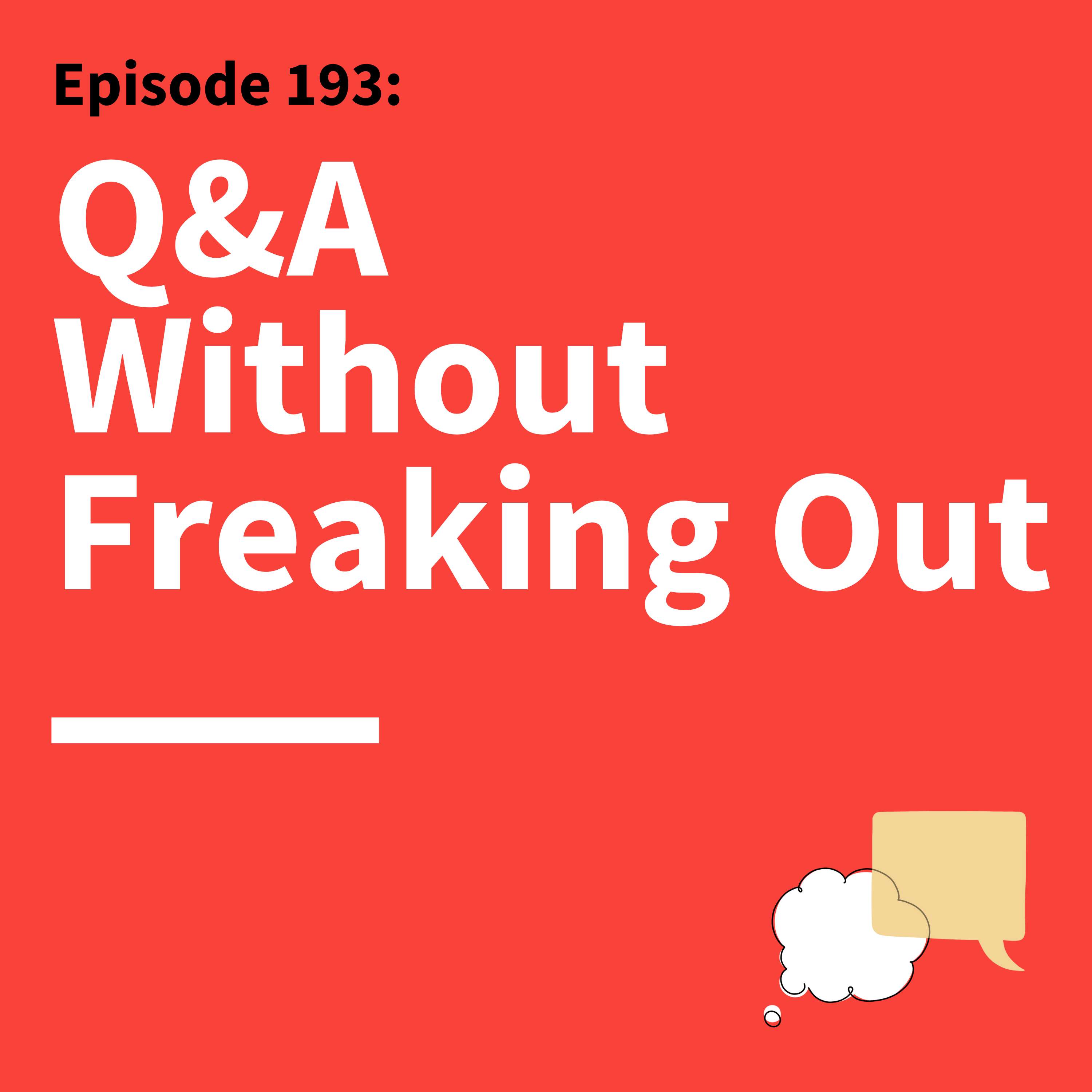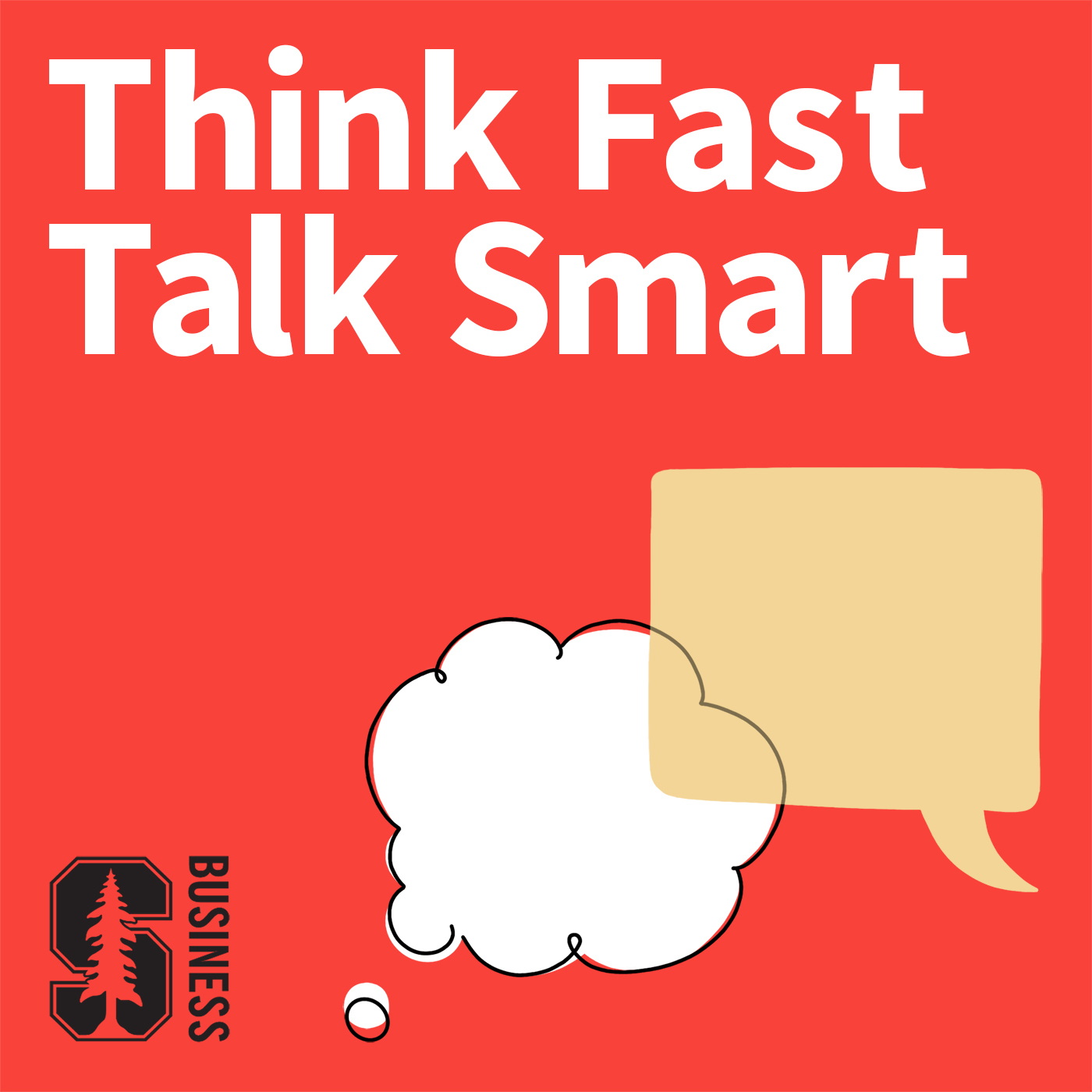
193\. Conquer Questions: ADDing Value To Your Answers

Think Fast, Talk Smart: Communication Techniques
Deep Dive
- Many speakers find the Q&A portion of presentations nerve-wracking.
- Taking questions at the end of the presentation is recommended for beginners.
- Seasoned speakers can take questions at designated times during the presentation.
Shownotes Transcript
Hi, Matt here. We spend years developing skills, gaining experience, and working hard. But when it comes to advancing, making a career change, or negotiating a better salary, many of us hesitate because we lack a clear strategy and accountability. And that's where today's sponsor, Strawberry.me Career Coaching, comes in. We know that success isn't just about effort.
It's about having the right guidance and feedback. Strawberry.me matches you with a certified career coach who will help you clarify your career goals. They'll help develop a results-driven strategy because progress requires action. And finally, they'll help you stay accountable. Top athletes have coaches. Great speakers have coaches. So why wouldn't you have one for your career? Go to strawberry.me slash smart and claim your $50 credit.
That's strawberry.me slash smart. Because great careers don't just happen. They're built with the right coaching. Many of us struggle and feel nervous when we go from monologue to dialogue, from presenting to Q&A. Yet it doesn't have to be this way. My name is Matt Abrahams, and I teach strategic communication at Stanford Graduate School of Business. Welcome to Think Fast, Talk Smart, the podcast.
Q&A during meetings and presentations can be incredibly challenging and nerve-wracking. Yet there are things we can do to feel more calm and confident in Q&A. Today I'll be playing a chapter from my first book, Speaking Up Without Freaking Out, which is now available as an audiobook on Spotify. Speaking Up Without Freaking Out is all about helping you be more calm and confident when you communicate. So as you listen to this chapter, I have one question for you.
What will you take away to help you feel and do better in your next Q&A session? Appendix C, commanding the room with confidence during Q&A.
Mustering the courage to present confidently in front of others is hard enough. But when it comes to actually engaging an audience and managing their participation during a question and answer session, many presenters freak out. Making this switch from monologue to dialogue is a challenge for both the audience and speaker alike. But it's necessary if you want to allow for questions. Your audience needs you to lead them through this transition.
They expect you to confidently command the room and help them to participate. The quick switch to interactivity and a more equal balance of status and power can be confusing and challenging to you and your audience. However, there are simple actions you can take to help you navigate smoothly and calmly into and through your Q&A session.
Prior to presenting, you should spend time reflecting on the questions you might receive on your topic. You might need to do some reconnaissance to find out your potential questions, such as asking people similar to those who will be in your audience, querying FAQ or frequently asked questions lists, or customers' prospect databases, and so on. Once you have some potential answers, you can begin to think about how you might answer them.
Thinking about what you intend to say is not enough. You also need to practice standing and delivering your answers. Simply knowing what you might encounter during the Q&A session can help reduce your anxiety.
Try this. While authoring your presentation's content, reflect on possible questions you might be asked. Decide if you should alter your content to address these questions in the body of your presentation. Or start to generate answers to these questions and actually practice delivering these answers.
To begin, you need to consider when to take questions from your audience. My advice for novice and nervous speakers is to take your questions at the end of your presentation. This compartmentalization allows you to stay focused on the task at hand, presenting or answering questions.
If you are a more seasoned speaker or have content that is very complex, you should consider taking questions throughout your presentation at designated times that you define for your audience at the beginning of your presentation.
When it comes time to ask your audience for their questions, you need to solicit their queries in a way that maintains your credibility and authority while being humble, open, and responsive. This transition to an actual conversation with your audience can be tricky, but it can be made easier by 1 the expectations you establish when you call for questions and 2 how you actually collect the questions that you intend to answer.
Too often, Q&A sessions are opened with a generic invitation like, "Are there any questions?" Broad invitations such as this are often too open-ended for audience members to come up with focused, concrete questions. Rather, I suggest asking for the exact type of questions you desire to answer. For example, "I'd like to spend 5 to 10 minutes answering questions about the solution I provided."
This boundary setting opening helps your audience know what types of questions to ask, establishes you as being in control, and leads to questions that you are prepared to answer. It is important to reflect on the anxiety involved in the Q&A session. As a presenter, it is easy to understand anxiety that you might feel, but audience members also experience nervousness during the Q&A session.
While you've had a chance to warm up and become comfortable with speaking in your environment, audience members do not have this advantage. Further, they're feeling the influence of several pressures. First, audience members might fear looking stupid and foolish by asking a question. Second, they may be highly sensitive to the power dynamics, for example, the boss being present, or societal norms, for example, it's disrespectful to question a speaker.
Finally, audience members might not want to put you on the spot and make you look bad. Unfortunately, as a presenter who desires good interactive questions, you must take on the added burden of helping your audience get their questions to you. To assist your audience in asking questions, allow for time after your initial call for their inquiries. It takes a little time for them to formulate questions as well as to muster up the courage to ask them.
If you do not get an initial question, have one ready to ask yourself. For example, you can say, "I am often asked." When accumulating questions, you have a few options available to go beyond the standard call and respond methodology. The first is to prioritize the questions coming in. In an online presentation platform, you should be able to flag questions that come in as you're presenting so when you get to the Q&A, you can already have some questions to start answering.
As new questions come in, it may help to have someone online with you to filter and ask the questions to you so you can stay focused on your answers. When presenting in front of a live audience, you can request that audience members write down their questions on note cards or post them via text message or tweets. This allows for some degree of anonymity for the asker and allows you to prioritize which questions you would like to answer.
Next, you can follow the lead of famous venture capitalist John Doerr and solicit all questions first, writing them down, and then answer them in the order you wish. Like this written approach, you can prioritize and link questions together.
When answering questions, paraphrase the question asked. This confers several benefits to you. One, you validate and reward the asker, which will likely encourage more participation, although avoid saying "good" question to every query. Two, it ensures you'll answer the correct question.
Three, if you can paraphrase and also think of an answer at the same time, you buy yourself a little preparation time. And four, you can reframe an emotional or challenging question to be better suited for you. For example, a question such as, your pricing is ridiculously expensive. How do you get away charging so much? Can be rephrased as, you're asking about our product's value.
When responding in person, remember to address your answer to the entire audience and deliver your answer in the same speaking style, cadence, vocal variation, etc., as you used during your presentation. You want to avoid becoming a different speaker in terms of your delivery.
One powerful nonverbal action you can take to demonstrate your confidence is to step forward toward the question asked while listening to the query. Nonverbally, Q&A online should always be done with video, if possible. To help your audience understand your answers, invoke the ADD method of answering questions. A. Answer the question.
One clear declarative sentence. D. Detail a specific concrete example that supports your answer. D. Describe the benefits that explain why your answer is relevant to the asker. An example ADD answer to the question, describe your qualifications for a job as a communication coach.
Answer. I have over 20 years of experience helping people improve their communication skills. Detail. I have helped line employees and executives learn to be more confident and compelling presenters. Just last week, I worked with an executive at a large local firm on a major keynote she had. Describe. What this means for you is that my experience will allow me to immediately help you with your specific needs.
Try this. After generating a list of possible questions, practice answering the questions using the ADD structure. Take the time not only to generate the content of your answer, but practice speaking the answer as well. The final step in a confidently managed Q&A session is to return to your core message prior to ending your talk.
Too often, nervous speakers end Q&A with a quick "thank you" and an even quicker exit from the stage. You want to end with impact, so be sure to thank your audience and concisely restate your central message. This ensures that the last thing your audience hears is what you want them to leave with. Taken all together, your pre-work and preparation for managing a Q&A session can dramatically reduce your nervousness over this anxiety-provoking spontaneous speaking situation.
So there you have it, a whole approach for feeling calm, confident, and in control during Q&A. If you like what you heard, consider checking out the new audiobook version of Speaking Up Without Freaking Out on Spotify or faster smarter.io/speakingup. Thank you for joining us for another episode of Think Fast, Talk Smart, the podcast. To learn more about anxiety management, please listen to episode 48.
This episode was produced by Jermaine Hamilton and me, Matt Ibrahams. Our music is from Floyd Wonder with thanks to Podium Podcast Company. Please find us on YouTube and wherever you get your podcasts. Be sure to subscribe and rate us. Also, follow us on LinkedIn and Instagram. And check out FasterSmarter.io for deep dive videos, English language learning content, and our newsletter.
Please consider our premium offering for extended Deep Thinks episodes, AMAs, Ask Matt Anything, and much more at faster, smarter.io slash premium.